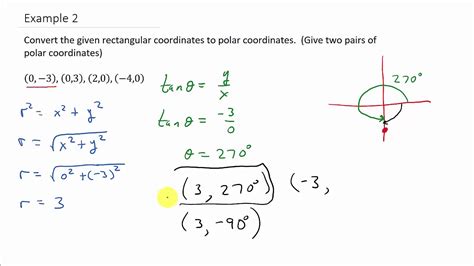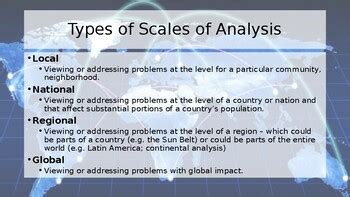The conversion of rectangular coordinates to polar coordinates is a fundamental concept in mathematics and engineering, particularly in fields such as physics, electrical engineering, and computer science. Rectangular coordinates, also known as Cartesian coordinates, represent points in a two-dimensional plane using the x and y axes. In contrast, polar coordinates represent points using the distance from the origin (radius) and the angle from the positive x-axis (polar angle). This article will delve into the principles and formulas behind the rectangular to polar coordinates conversion, exploring its significance, applications, and step-by-step process.
Understanding Rectangular and Polar Coordinate Systems

The rectangular coordinate system, also known as the Cartesian coordinate system, is defined by two axes: the x-axis (horizontal) and the y-axis (vertical). Each point in this system is represented by an ordered pair (x, y), where x is the horizontal distance from the origin, and y is the vertical distance from the origin. On the other hand, the polar coordinate system represents points using two values: the radius ® and the polar angle (θ). The radius is the distance from the origin to the point, and the polar angle is the angle between the positive x-axis and the line connecting the origin to the point, measured counterclockwise.
Conversion Formulas
The conversion from rectangular coordinates (x, y) to polar coordinates (r, θ) can be achieved using the following formulas:
| Coordinate | Formula |
|---|---|
| Radius (r) | r = √(x^2 + y^2) |
| Polar Angle (θ) | θ = arctan(y/x) |

These formulas provide a direct method for converting any point in the rectangular coordinate system to its equivalent representation in the polar coordinate system. It's crucial to consider the quadrant in which the point lies when calculating the polar angle, as the arctan function returns values between -π/2 and π/2. Adjustments must be made based on the signs of x and y to ensure θ falls within the correct range.
Key Points
- The rectangular to polar coordinates conversion is fundamental in various mathematical and engineering applications.
- The conversion involves calculating the radius (r) and the polar angle (θ) using the formulas r = √(x^2 + y^2) and θ = arctan(y/x), respectively.
- Understanding the quadrant of the point (x, y) is essential for accurately determining the polar angle θ.
- Polar coordinates offer a convenient representation for problems involving circular or rotational symmetry.
- The conversion process is reversible, allowing for the transformation of polar coordinates back to rectangular coordinates using the formulas x = rcos(θ) and y = rsin(θ).
Applications and Significance

The ability to convert between rectangular and polar coordinates is vital in numerous applications. In physics, polar coordinates are often used to describe the motion of objects in circular paths, such as the orbit of planets or the rotation of wheels. Electrical engineering utilizes polar coordinates in the analysis of AC circuits and the design of filters. Computer science applies these conversions in graphics programming for tasks like rotating and scaling objects. The flexibility to switch between these coordinate systems enables problem solvers to choose the most convenient representation for the task at hand, simplifying complex calculations and providing deeper insights into the nature of the problem.
Step-by-Step Conversion Process
To convert a point from rectangular coordinates (x, y) to polar coordinates (r, θ), follow these steps:
- Calculate the radius (r) using the formula r = √(x^2 + y^2).
- Determine the polar angle (θ) using the formula θ = arctan(y/x). Be sure to consider the quadrant of the point (x, y) to adjust θ accordingly.
- Ensure the calculated polar angle θ is in the correct quadrant by analyzing the signs of x and y:
- If x > 0 and y ≥ 0, θ is in the first quadrant.
- If x < 0 and y ≥ 0, θ is in the second quadrant, and you may need to add π to the result of arctan(y/x).
- If x < 0 and y < 0, θ is in the third quadrant, and you may need to add π to the result of arctan(y/x).
- If x > 0 and y < 0, θ is in the fourth quadrant, and you may need to add 2π to the result of arctan(y/x) if it is negative.
Conclusion and Future Directions
In conclusion, the conversion from rectangular to polar coordinates is a powerful tool with widespread applications across various disciplines. By understanding the principles behind this conversion, individuals can tackle complex problems with ease, leveraging the strengths of each coordinate system. As technology advances and new challenges emerge, the ability to seamlessly transition between rectangular and polar coordinates will remain a crucial skill, enabling innovators to push the boundaries of what is possible in fields such as robotics, aerospace engineering, and computer-aided design.
What are the primary applications of polar coordinates in engineering?
+Polar coordinates are widely used in the analysis of circular motion, AC circuit analysis, filter design, and in the description of rotational kinematics and dynamics. They provide a convenient framework for problems involving rotational symmetry.
How do I handle points on the axes when converting to polar coordinates?
+For points on the axes, the polar angle θ can be determined based on the axis. For the positive x-axis, θ = 0; for the negative x-axis, θ = π; for the positive y-axis, θ = π/2; and for the negative y-axis, θ = -π/2 or 3π/2. The radius r for these points is simply the distance from the origin to the point.
Can polar coordinates be converted back to rectangular coordinates?
+Yes, polar coordinates (r, θ) can be converted back to rectangular coordinates (x, y) using the formulas x = rcos(θ) and y = rsin(θ). This conversion is straightforward and allows for easy switching between the two coordinate systems based on the requirements of the problem or application.



